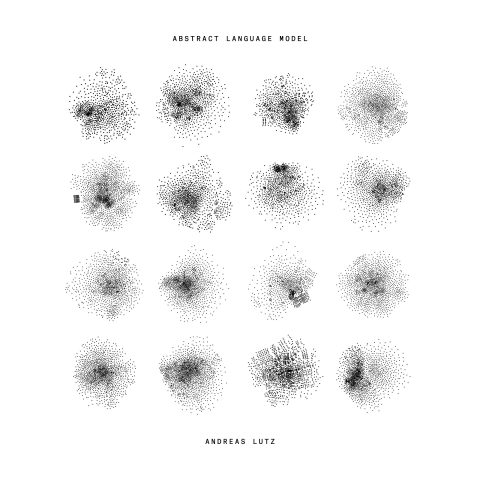Andreas Lutz’s Abstract Language Model is merely the auditory component to a much larger work of the same name, encompassing visual as well as aural modes of representation. With that information in mind, there might be an expectation that the album version of this material could be lacking, or missing parts, or whatever, unable otherwise to stand on its own. Nothing could be further from the truth, though, and this is a credit to the degree of control (or lack thereof) that Lutz asserts on his machine-learning neural network (read: computational) model, trained in the fine art of Unicode: a quasi-universal characterset, incorporating nearly all forms of written communication. Such heady experiments often fall flat in their execution, failing to deliver the sonic goods with their performative conceits, but not here.
The album is divided into seven commands, what I assume were the protocols that directed the network to respond as it did. It’s nearly impossible to know exactly how much mixing and altering Lutz did with his source material, but the results lead me to believe it was more than a little. The album is a study in concentrated ambient washes, each track moving with a similar, android animation. Subtle harmonics occasionally emerge and are then swallowed up by the blackhole of language, which, like reason, defines the ineradicable horizon of human understanding. All the better to leave the human behind, then. When we arrive at “Transformation”, one of the two longest tracks on Abstract Language Model, the feeling is one of sign systems having their lives snuffed out, a transition to the role of the network now as both producer and audience. What remains palpable among the metallic drone of machine intelligence is the rise and fall of degrees of emphasis, the structural sine qua non of any system of utterances. One thing has to be louder than another, mark space or distance between what is spoken and what is said. “Language”, the last composition, makes no bones about its mode of emphasis, filling the sonic spectrum with noise, glitch, and even a strangulated keyboard putting out its own version of code, familiar and alien at the same time.
For fans of rich, ambient soundscapes with decidedly machine-like overtones – think of Windy & Carl or Grouper fed through a ring modulator the size of a city – this is a deeply nuanced and resonant work in the genre. Highly recommended!
— Colin Lang via Musique Machine
